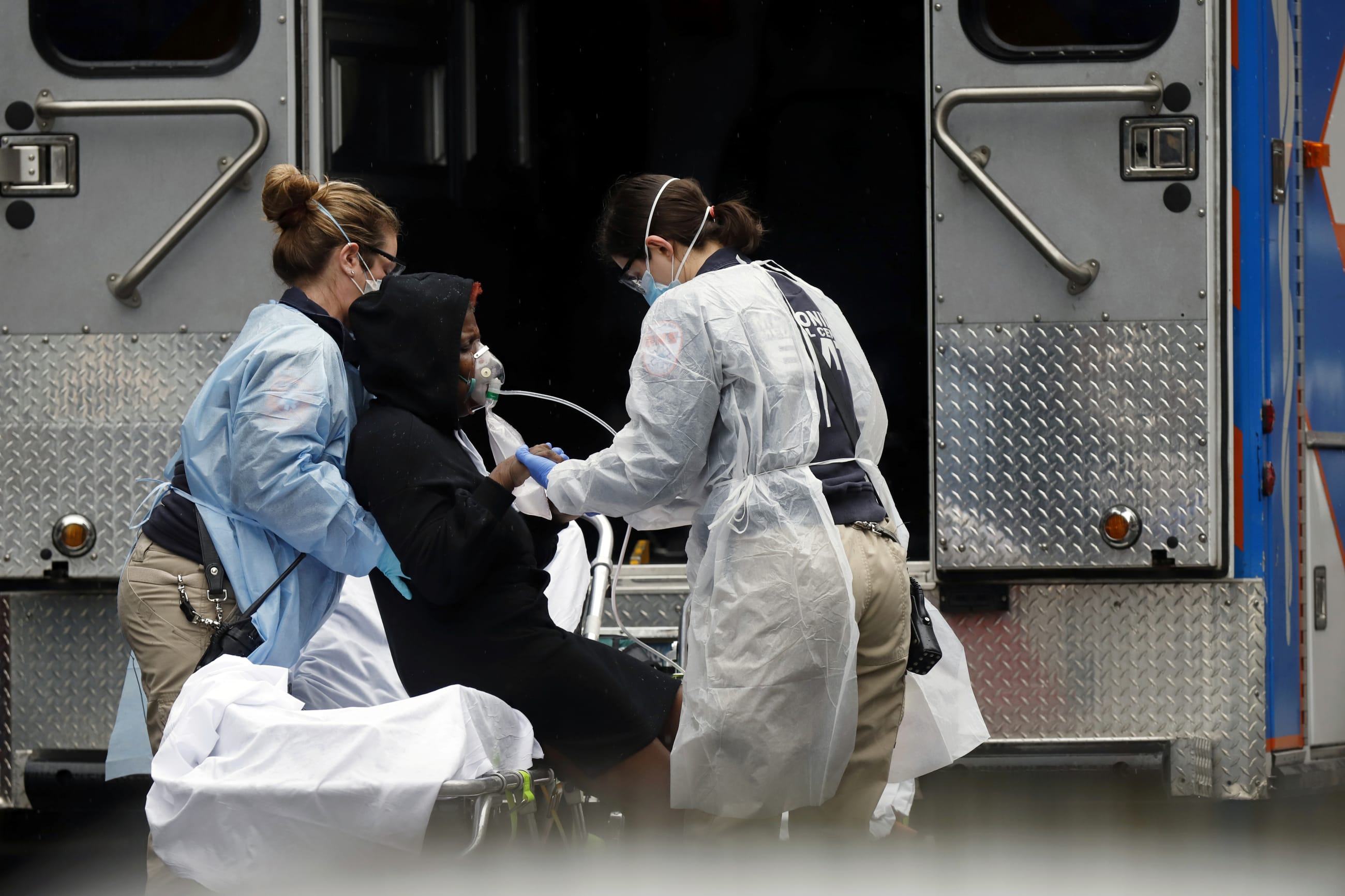In the early days of COVID-19, one group of people was nearly universally celebrated: frontline health-care workers. Between profiles in Time Magazine and ticker-tape parades through New York City, the United States rallied their support behind the medical staff combating the spreading virus. Frontline workers, like emergency medical technicians and paramedics, were the health-care heroes battling the pandemic. Yet the hero title belies a troubled system that counts low pay, reliance on volunteerism, and an exclusionary work culture as its unfortunate cornerstones.
Hard Work and Low Pay
Working in emergency prehospital care may grant the title of hero, but it does not earn a living wage. According to the latest statistics released by the U.S. Bureau of Labor, an emergency medical technician (EMT) earns an average of $17.64 an hour. A paramedic, whose scope of practice is wider and requires a more advanced certification than an EMT, earns slightly more, an average of $25.75 an hour. Depending on where they work, a full-time EMT or paramedic could earn less per hour than a short-term substitute teacher. Indeed, most of the Emergency Medical Services (EMS) workforce work more than forty hours per week on average, and a majority depends on a combination of bonus overtime and second jobs to make ends meet.
Low wages make the difficult parts of prehospital care more difficult to manage. EMS has some of the highest rates of occupational injury; between lifting and moving equipment, exposure to infectious disease, and injuries from combative patients, the ambulance is rife with hazards. Mental and emotional health is also adversely affected. Studies have shown that the effects of long-term sleep disturbance and exposure to trauma have contributed to high rates of substance abuse, post-traumatic stress disorder, and burnout among providers.
The hero title belies a troubled system that counts low pay, reliance on volunteerism, and an exclusionary work culture as its cornerstones
Unsurprisingly, low wages and poor lifestyle associated with the job have made a deadly combination for provider retention, especially during the ongoing pandemic. Almost 450,000 EMS personnel are certified in the United States and the number of people enrolling in EMS classes has not dropped, yet dire staff shortages are being reported across the country. In the words of National Association of Emergency Medical Technicians President Susan Bailey, "it's a workforce shortage . . . but it's also a placement, a distribution problem." Those with licensure are increasingly opting for jobs outside the prehospital environment, choosing jobs such as in-hospital technicians or medical assistants that offer better pay and predictable, daytime scheduling.
The Volunteer Backbone of U.S. EMS
The need for emergency medical care is agnostic to staffing levels. In the United States, this has led to an extraordinary reliance on volunteer EMS personnel to bolster critical prehospital services. More than 10 percent of the national EMS workforce serves as "professional EMS volunteers" -— meaning that they receive little to no compensation and work regularly on the ambulance. This is particularly prevalent outside major urban areas, where agencies can afford to train and employ a greater percentage of responders. In rural areas, it is common for EMS agencies to employ a small number of full-time paramedics, filling all other shifts with certified and unpaid volunteers. A 2018 report by the National Rural Health Association estimated that in some regions, volunteer personnel respond to more than 90 percent of calls.
The high prevalence of volunteerism in EMS is partly due to the profession's historical association with community service and partly to the fact that many rural towns have no other choice. Most states do not class ambulances as essential services — a classification reserved for police and firefighters — and as such, do not enjoy regular government funding. This leaves some agencies a difficult choice: almost complete reliance on volunteers or the absence of organized prehospital care in their area. In the wake of rural hospital closures, volunteer EMS may be the only immediate care service Americans have at their disposal for miles.
Unwelcoming Underrepresentation
Just as the system of prehospital care in the United States is flawed, so is the institutional culture of those working within it. Workplace incivility, defined as "negative interpersonal acts that violate workplace and social norms," are rampant, with one study reporting that almost 50 percent of surveyed EMS professionals experienced at least one incidence of incivility a week. Sexual harassment, bias in certification testing, and an inequality in opportunities for promotion are part of a persistent and pervasive negative working environment.
This is directly associated with the lack of diversity among EMS workers. A national study found that, in 2018, 85 percent of providers were non-Hispanic white and 76 percent identified as men. Between 2008 and 2017, women made up less than 25 percent of newly graduated paramedics nationwide. The most diverse agencies, especially in terms of gender, tend to be the most rural, and crucially, the most likely to be volunteer. In essence, the EMS workplace features little diversity and instills a working culture that is antithetical to welcoming providers from all backgrounds.
A Better Thank You
It is necessary that the United States invest in its EMS workforce to make it the well-staffed, resilient system the nation requires. This should begin by funding the emergency services sustainably and, importantly, by working to compensate all ambulance workers to lessen national dependence on EMS volunteers. But this should come hand in hand with a renewed commitment to make the workplace for prehospital providers a more welcoming and diverse environment. Increased availability of EMS classes for low-income groups and minorities, a zero-tolerance approach to harassment with transparent reporting mechanisms, and inclusive hiring and promotion practices are all steps toward that goal. The greatest thank you the United States could give pandemic-worn EMS professionals is a rehaul of the system in which they work.













